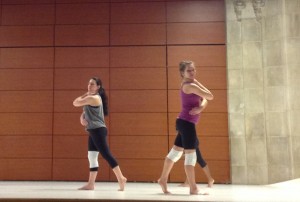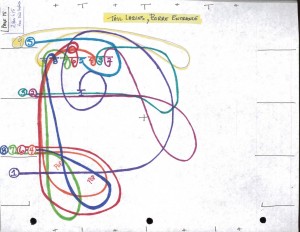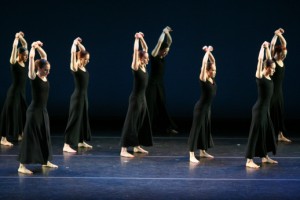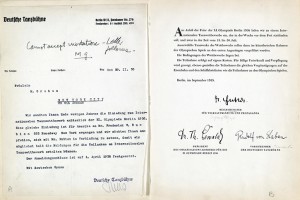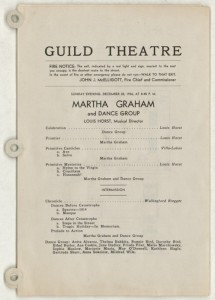Sophie Maslow, a dancer with Martha Graham’s company during its early years, on her initial experiences working with Martha:
She made you do more than your best in class. You would find yourself doing things you didn’t even know you could do, and you wouldn’t dare do any less than your best. If she told you to take three leaps and jump out of the window, you would’ve done that too. She did ask us to do impossible things at certain times in class. She was very busy beginning to find her way, finding a new way of moving. That way was to make the human body an instrument that would be capable of expressing all things in human experience, not just pretty things. Sometimes they were ugly things.
It is this expression of emotion through the rigors of technique that became the focus of Bryn Mawr’s dancers’ second weekend of rehearsals with Jennifer Conley. Having set the majority of the choreography and staging last weekend, now was the time for fine-tuning the details that would really lend the dance its emotive strength.
This involved a focus on form to strengthen the shapes of the dance. That is, the articulation of the body in particular positions as well as the timing and spacing of the dance as a whole. Jennifer broke down the choreography to examine specifics like where the gaze should be directed and what muscle groups are being engaged at different points in the movement. Through this process she created wonderfully evocative images (some of which are in the captions below) to help the dancers connect to the deconstructed Steps both physically and emotionally.
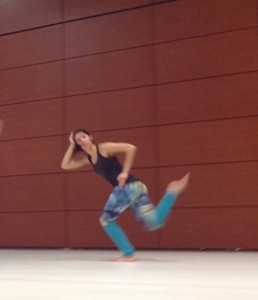
Camila Aguais, spiral lunging
Imagine: the spiral wrapping around the spine, creating space between each vertebrae. The hips remain on the same plane, like geologic strata or the grain of wood. There is no release, no waves or undulations, rather the body arrives as one monolithic whole.


